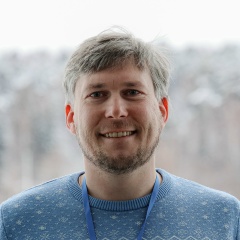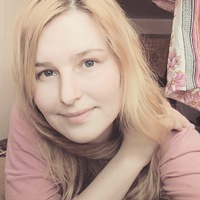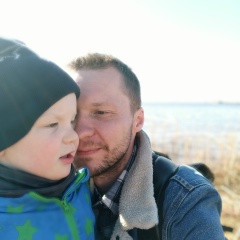История празднования 9 мая
Первый в истории День Победы отмечали в 1945 году. Ровно в 6 утра по всем громкоговорителям страны был торжественно зачитан Указ Президиума Верховного Совета СССР о назначении 9 мая Днем Победы и присвоении ему статуса выходного дня.
В этот вечер в Москве был дан Салют Победы - грандиозное по тем временам зрелище - тысячи зенитных орудий выпустили 30 победных залпов. Улицы городов в день окончания войны были переполнены ликующими людьми. Они веселились, пели песни, заключали друг друга в объятия, целовались и плакали от счастья и от боли за тех, кто не дожил до этого долгожданного события.
Первый День Победы прошел без военного парада, впервые это торжественное шествие состоялось на Красной площади только 24 июня. К нему готовились тщательно и долго - на протяжении полутора месяцев. На следующий год парад стал неотъемлемым атрибутом торжества.
Однако пышное празднование Дня Победы продолжалось всего лишь на протяжении трех лет. Начиная с 1948 года в разрушенной фашистками войсками стране власти посчитали нужным поставить на первое место восстановление городов, заводов, дорог, учебных заведений и сельского хозяйства. Выделять из бюджета немалые средства для пышного празднования важнейшего исторического события и предоставлять дополнительный выходной день рабочим отказались.
Свою лепту в возвращение Дня Победы внес Л. И. Брежнев - в 1965 году, в двадцатилетний юбилей Великой Победы, в календаре СССР 9 Мая снова окрасился в красный цвет. Этот важный памятный день был объявлен выходным. Во всех городах-героях возобновились военные парады и салюты. Особым почетом и уважением в праздник пользовались ветераны - те, кто ковал победу на поле боя и в тылу врага. Участников войны приглашали в школы, в высшие учебные заведения, с ними организовывали встречи на производствах и душевно поздравляли на улицах словами, цветами и радушными объятиями.
Первый в истории День Победы отмечали в 1945 году. Ровно в 6 утра по всем громкоговорителям страны был торжественно зачитан Указ Президиума Верховного Совета СССР о назначении 9 мая Днем Победы и присвоении ему статуса выходного дня.
В этот вечер в Москве был дан Салют Победы - грандиозное по тем временам зрелище - тысячи зенитных орудий выпустили 30 победных залпов. Улицы городов в день окончания войны были переполнены ликующими людьми. Они веселились, пели песни, заключали друг друга в объятия, целовались и плакали от счастья и от боли за тех, кто не дожил до этого долгожданного события.
Первый День Победы прошел без военного парада, впервые это торжественное шествие состоялось на Красной площади только 24 июня. К нему готовились тщательно и долго - на протяжении полутора месяцев. На следующий год парад стал неотъемлемым атрибутом торжества.
Однако пышное празднование Дня Победы продолжалось всего лишь на протяжении трех лет. Начиная с 1948 года в разрушенной фашистками войсками стране власти посчитали нужным поставить на первое место восстановление городов, заводов, дорог, учебных заведений и сельского хозяйства. Выделять из бюджета немалые средства для пышного празднования важнейшего исторического события и предоставлять дополнительный выходной день рабочим отказались.
Свою лепту в возвращение Дня Победы внес Л. И. Брежнев - в 1965 году, в двадцатилетний юбилей Великой Победы, в календаре СССР 9 Мая снова окрасился в красный цвет. Этот важный памятный день был объявлен выходным. Во всех городах-героях возобновились военные парады и салюты. Особым почетом и уважением в праздник пользовались ветераны - те, кто ковал победу на поле боя и в тылу врага. Участников войны приглашали в школы, в высшие учебные заведения, с ними организовывали встречи на производствах и душевно поздравляли на улицах словами, цветами и радушными объятиями.
May 9th Celebration History
The first Victory Day in history was celebrated in 1945. At exactly 6 a.m., a decree of the Presidium of the Supreme Soviet of the USSR on the appointment of May 9 as Victory Day and the assignment of weekend status to it was solemnly read out on all the country's speakers.
That evening, the Victory Salute was given in Moscow - a spectacular sight for those times - thousands of anti-aircraft guns fired 30 victorious salvoes. The streets of the cities on the day the war ended were crowded with jubilant people. They had fun, sang songs, embraced each other, kissed and cried from happiness and pain for those who did not live up to this long-awaited event.
The first Victory Day was held without a military parade, for the first time this solemn procession took place on Red Square only on June 24. They prepared for it carefully and for a long time - for a month and a half. The next year, the parade became an integral attribute of the celebration.
However, the magnificent celebration of Victory Day lasted for only three years. Since 1948, in the country destroyed by fascist troops, the authorities considered it necessary to put in the first place the restoration of cities, factories, roads, educational institutions and agriculture. They refused to allocate considerable funds from the budget for the magnificent celebration of the most important historical event and to provide an additional day off.
L.I. Brezhnev made his contribution to the return of Victory Day - in 1965, on the twentieth anniversary of the Great Victory, on the May 9 calendar of the USSR again turned red. This important memorial day was declared a day off. In all hero cities, military parades and fireworks resumed. Veterans - those who forged victory on the battlefield and behind enemy lines, enjoyed special honor and respect on the holiday. Participants in the war were invited to schools and universities, organized meetings with them at enterprises and sincerely congratulated them on the streets with words, flowers and a warm embrace.
The first Victory Day in history was celebrated in 1945. At exactly 6 a.m., a decree of the Presidium of the Supreme Soviet of the USSR on the appointment of May 9 as Victory Day and the assignment of weekend status to it was solemnly read out on all the country's speakers.
That evening, the Victory Salute was given in Moscow - a spectacular sight for those times - thousands of anti-aircraft guns fired 30 victorious salvoes. The streets of the cities on the day the war ended were crowded with jubilant people. They had fun, sang songs, embraced each other, kissed and cried from happiness and pain for those who did not live up to this long-awaited event.
The first Victory Day was held without a military parade, for the first time this solemn procession took place on Red Square only on June 24. They prepared for it carefully and for a long time - for a month and a half. The next year, the parade became an integral attribute of the celebration.
However, the magnificent celebration of Victory Day lasted for only three years. Since 1948, in the country destroyed by fascist troops, the authorities considered it necessary to put in the first place the restoration of cities, factories, roads, educational institutions and agriculture. They refused to allocate considerable funds from the budget for the magnificent celebration of the most important historical event and to provide an additional day off.
L.I. Brezhnev made his contribution to the return of Victory Day - in 1965, on the twentieth anniversary of the Great Victory, on the May 9 calendar of the USSR again turned red. This important memorial day was declared a day off. In all hero cities, military parades and fireworks resumed. Veterans - those who forged victory on the battlefield and behind enemy lines, enjoyed special honor and respect on the holiday. Participants in the war were invited to schools and universities, organized meetings with them at enterprises and sincerely congratulated them on the streets with words, flowers and a warm embrace.

У записи 22 лайков,
4 репостов,
959 просмотров.
4 репостов,
959 просмотров.
Эту запись оставил(а) на своей стене Данил Иванов










































